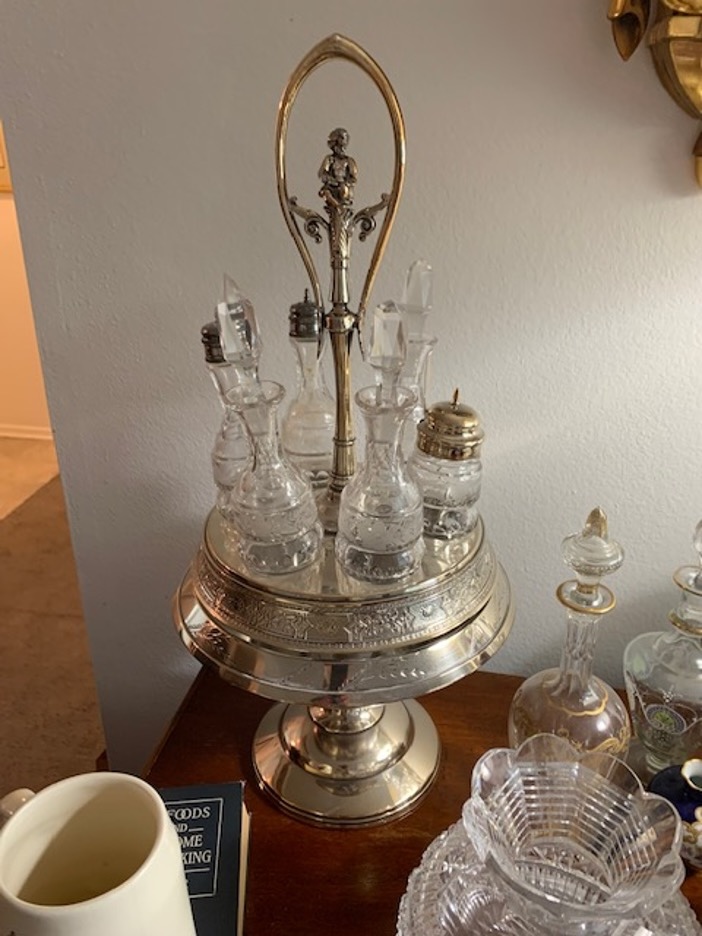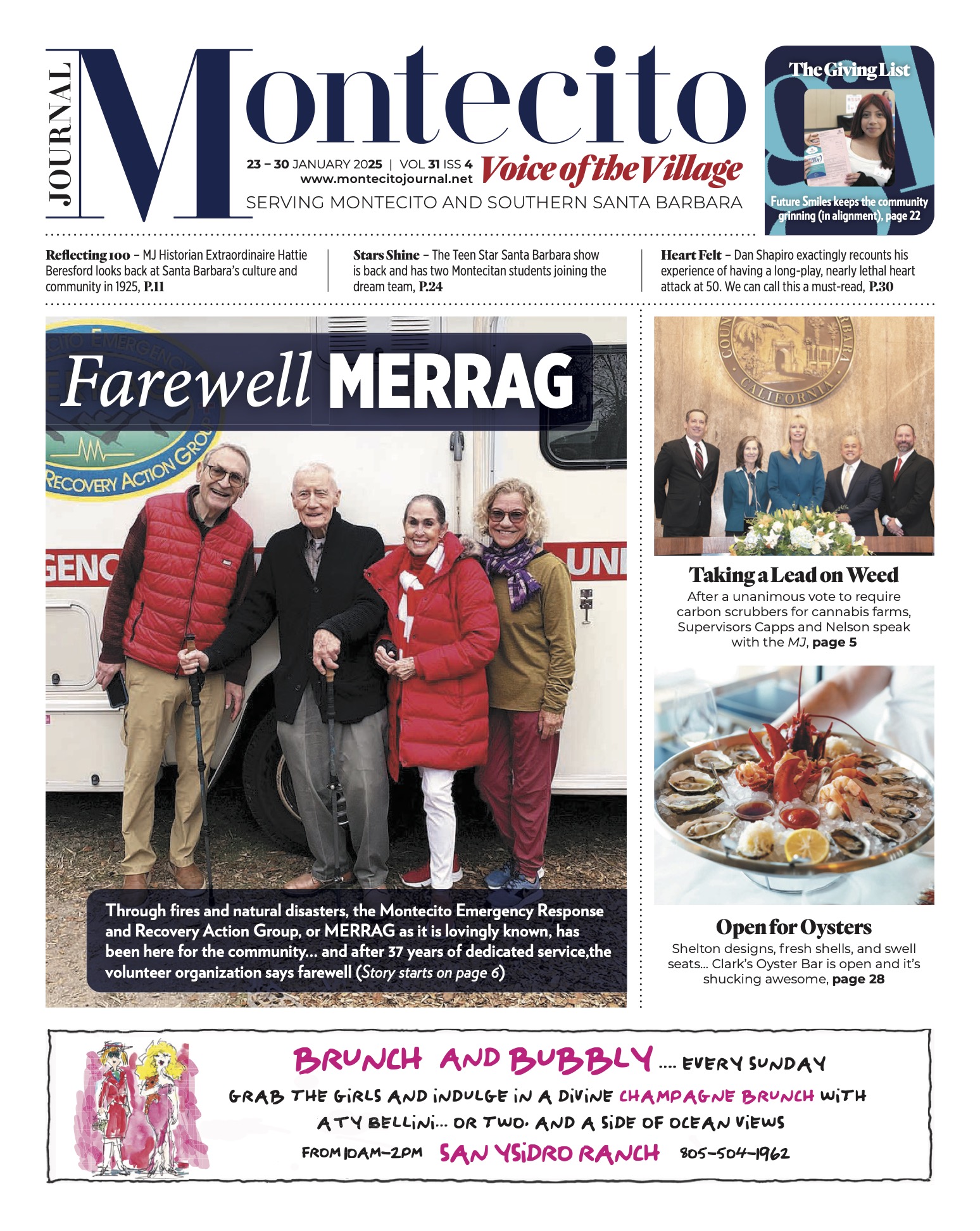1880s Cruet Stand

This object that was once the rage tells delectable stories: here is an 1880s cruet stand. HU sends me a round, swiveling carousel of silver plate inset with five crystal cruets, topped by an elaborate silver figural handle featuring a nude putto. By the late 1880s every upper-middle-class and most middle-class aspirational families of the U.S. and England had one of these on the dining table, or separate models for breakfast, lunch, and dinner (after all, the condiments required were different for different meals). In the 1890s these cruet holders were the most common wedding gift in the U.S. Today both the functionality and the style of these ornate beauties are passé, but in the late 19th century they were a marker of solid middle-class genteel decorum. You had to have at least one to be a socially acceptable host, exhibiting proper dining manners.
What did the cruets hold? They began in Italy with a vial for vinegar and one for oil in the 17th century. The form was brought to France by Cardinal Mazarin (1602-1661), an Italian Jesuit cardinal, politician and diplomat, chief advisor to both King Louis XIII and XIV (1642-1661). King Louis XIV came to the throne at age 4, thus the young king was under the cardinal’s direction until Louis XIV ascended the throne at 22. Cardinal Mazarin was a declared FOODIE. Born in Abruzzo, he gave Italian delicacies to the fine ladies of the Court; pastries were named after him. He treated his seven darkly beautiful virginal nieces as his own children. The young ladies came to be known collectively as “the Mazarinettes”, a bit of fashionable slang. As a man of the cloth Cardinal Mazarin could not marry, and so threw himself at his beloved nieces, setting lavish tables to entertain them and their future suitors, handpicked by the Cardinal to ensure their future wealth. Being a man of a fine palate, he seasoned his own food at the table.
By the 18th century most noble European families had cruet table sets, crystal bottles set in a sterling stand, and by the 19th century most British and middle-class American families had cruet sets which did not hold a shaker for salt (the standard perforated shaker had not been invented). The invention of electroplating cheapened the sets; silver plate was affordable. The silver-plated revolving stand held vials for balsamic vinegar with a strainer in the lid, olive oil, mustard, spices or soy sauce, pepper, and sugar (sets held up to 10 bottles). Salt was in a separate tiny bowl with a tiny spoon at each place setting.
The mid to late 19th century was a formative time in the diversification of the specified tableware market, where demand was encouraged and supply buoyed by a certain philosophy concerning the determinates of decorum. During the Victorian era (1837-1901) and Edwardian era (1901-1910) table etiquette and the correct knowledge and usage of various forms of tableware was a passport to civilized genteel society. The rules of society were created around objects invented for dining. How a diner handled his implements was closely observed; rule books were written about when to use the pickle fork. Thus, the Industrial Revolution’s tableware production and mid-19th century moral code became intertwined, and a market was created for consuming (literally) both food and morality.
The home was a female gendered space, differentiated from the hostile male world of commerce, competition, and trade. Genteel table manners were imperative; dining was governed by formal rules, and these rules had serving implements to match.
The cruet set is one complex example of such specialization. The proper middle-class diner had to know how to handle the salt cellar and spoon, the sweetmeat tongs, the oyster forks, the terrapin sauce pans, the punch spoons, the pastry forks, the egg spoons, the preserved fruit and vegetable dishes, the bone plates (for gnawed bones), and the fish trowels. A matched set of dishware was imperative by the mid to late 19th century; ads in mail order catalogues state that a set is 100 pieces: plates, soup plates, twifflers (8” plates), muffins (4-7” plates), soup and sauce tureens, platters, covered and open servers, pitchers, gravy boat, butter dish, and bakers. 1850s-1900 dining required a wide range of glassware, ceramics, silver plate, and many forms of crystal. A plethora of books and domestic periodicals were written about how to equip and run a proper home. Thus, the cruet is an artifact that represents the archaeology and anthropology of 19th century domesticity and gentility. The value is $75, despite its tasty narrative history!







You must be logged in to post a comment.